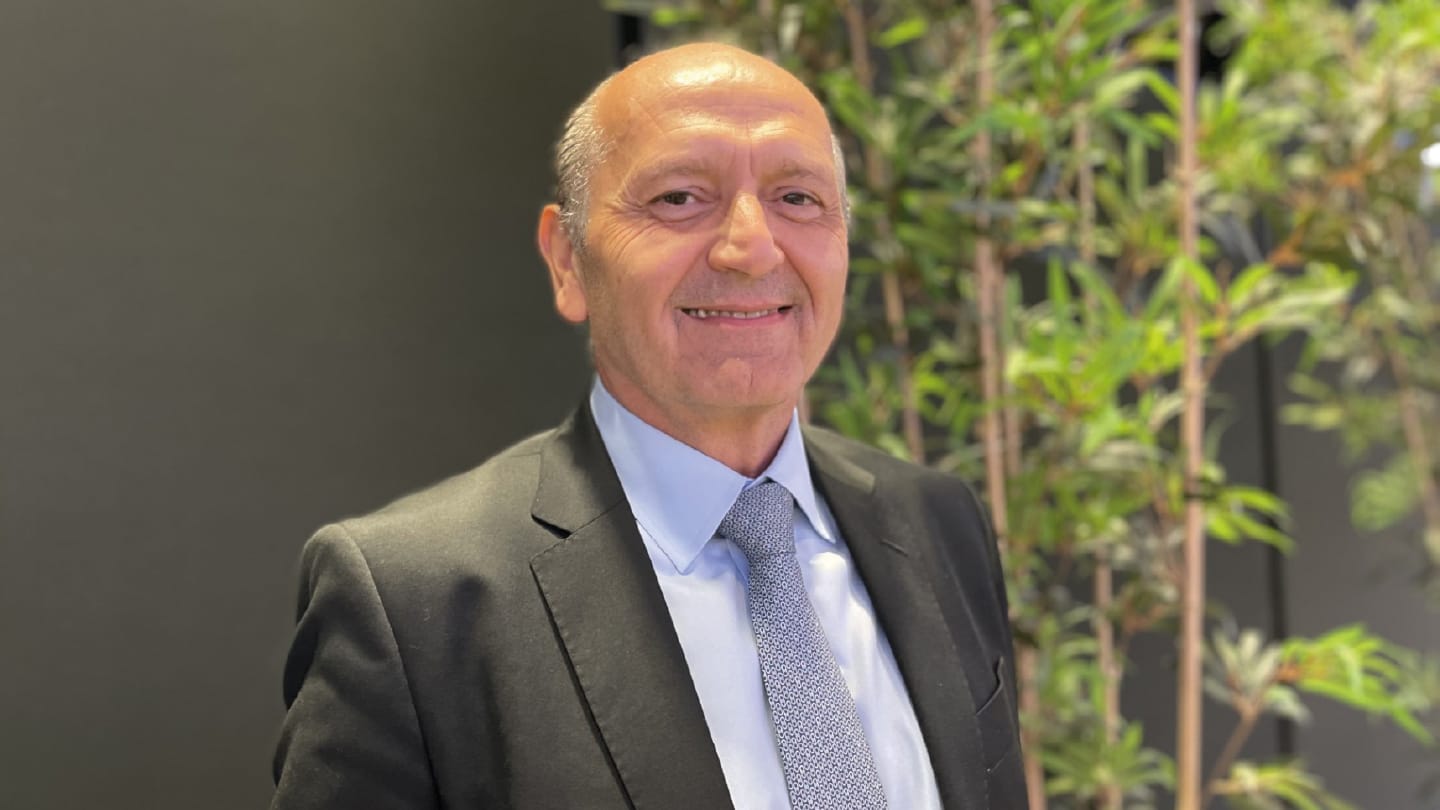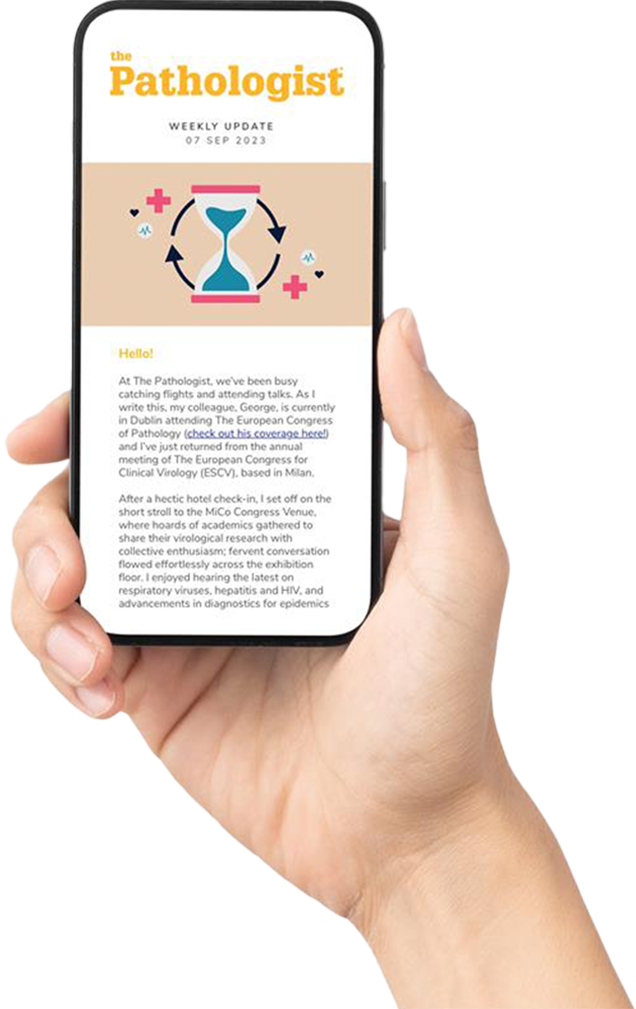
Did you always want to be a pathologist?
Early in medical school, pathology was definitely high on my list as a specialty. I always knew I liked biological sciences; that's part of the reason I went into medicine. So, I thought pathology would be a good fit for that interest. I was also drawn to research, and through the years I became increasingly convinced of my path.
There were also practical considerations. When I moved to the USA as an international medical graduate, wait times for clinical positions were long. The opportunity of a pathology residency presented itself in a very good department, and I really never looked back.
Interestingly, I joined the field just as the immunohistochemistry era was starting – what we call the first revolution of pathology. Moving beyond morphology alone made the field even more exciting; I knew I'd made the right decision.
Has your career been driven more by scientific curiosity or the desire to make an impact on medicine?
My commitment to advance clinical care through translational scientific discovery drives my passion for our field. That's why pathology really is the perfect specialty for someone like me. As department head, I oversee equally successful and driven faculty members in basic science, translational science, and, of course, clinical practice. I'm one of the few Chairs at the University of Pennsylvania (UPenn) who attends both the basic science Chairs meetings and the clinical operations Chairs meetings.
How has the field of pathology evolved during your career?
The second revolution of pathology came in the late nineties with molecular diagnostics, especially after the human genome project. That's where the workforce really started expanding to include molecular biologists, as we started performing DNA sequencing to identify targets of therapies for cancer patients.
Then the third revolution, in the last five to ten years, saw digital pathology and AI becoming a big part of what we do. That's where computational engineers and software engineers are joining us.
I call this workforce shift "expanding the tent," and see it as part of pathology's metamorphosis.
What are your ambitions for the next few years?
UPenn has a rich history of excellence in biomedical research. CAR T cell therapy was first developed here, as was much of our understanding of the mechanisms of neurodegeneration in Alzheimer's and Parkinson's disease. Our Department of Pathology and Laboratory Medicine has enjoyed a number one ranking in NIH funding in the USA for the last two years.
In addition to continuing to maintain our lead in those areas. We will be investing in single cell and spatial multiomics, and strengthening our AI and bioinformatics capabilities.
Which recent advancements in diagnostics are you most excited about?
AI and machine learning are really the central engine driving many of our technological advances. Coupled with advances in digital pathology, AI will fundamentally reshape how we practice pathology and medicine. It's enabling us to process and interpret the tremendous amount of data generated by single-cell and spatial omics analysis.
I'm not concerned about AI replacing pathologists— rather, it must be integrated thoughtfully into our field, and I find that prospect tremendously exciting.
The therapeutic landscape is equally compelling. Antibody–drug conjugates (ADCs) represent a particularly rich area for pathology. These are essentially intelligent targeted therapies – smart bombs, if you will – designed to "dock" on tumor sell-specific markers to deliver an associated lethal payload. Pathologists can play a crucial role here not only in identifying candidate docking markers, but also in deciphering multimodal signatures that can predict patient response to ADCs.
What are your responsibilities as Standing Editor of the WHO "Blue Books" for tumor classification?
This role affords me the opportunity to collaborate with expert editors across the entire series. Each book is organized by organ system or anatomical region – gynecologic, soft tissue and bone, dermatology – and as Standing Editors, we work collectively with the expert editors on every volume.
The Standing Editors are also helping shape the series so that it's grounded in molecular advances in tumor classification. We're aiming to balance two crucial elements. On one hand, we want to incorporate what we call molecular-based classifications – increasingly precise subtype distinctions based on newly discovered molecular drivers. But equally critical, we must also balance this evolution of classification with a pragmatic perspective that takes into account what's technically and financially feasible in low- and middle-income countries (LMICs). That's where our work as Standing Editors becomes genuinely important – collaborating with the series leaders and LMIC representatives to strike an effective balance. These classification systems are designed for the entire globe, not just high-resource countries. That fundamental principle shapes every decision we make about what to include and how to present it.
What were your key learnings from your time as Editor-in-Chief of the Journal of Modern Pathology?
My time as editor was focused on achieving a truly global vision for the journal. The realization that exceptional scientific work is happening worldwide motivated me to ensure that the journal content reflected that. We deliberately expanded our reach into China, Japan, and other Asian-Pacific regions. We equally made a concerted effort to expand our European footprint. My managing editor and I delivered talks about publishing standards and what constitutes strong scientific work, at international Pathology conferences and through virtual sessions.
My tenure at Modern Pathology enhanced my belief in the impact of multichannel communication of science. We launched the ModPath CHAT podcast series, where I hosted authors to discuss their manuscripts, share digests with pathologists across the globe, and raise awareness of our publication. The journal embraced social media, garnering a following on X and LinkedIn, which proved invaluable. The fundamental principle is this: if we don't actively communicate about important discoveries in Pathology, they simply languish. Their potential benefit is lost. By making the scientific community aware of these advances, we amplify their impact exponentially. That remains central to how I approach disseminating knowledge now, following research discussions on a number of platforms to stay current with the latest publications.
How do you find being a podcast host?
I enjoy it. And I find it educational for both myself and the listeners. When you're discussing an article with its author, the format forces you to dig deep into the work. It essentially provides a second review, allowing you to explore nuances that don't necessarily surface easily in the manuscript itself. You inevitably learn far more about the topic through that process.
What I particularly enjoy is the discipline of simplification – boiling complex research down to its essential message so that someone listening for fifteen minutes on the treadmill, say, can grasp the key takeaways from an important publication. I developed this approach during my time with Modern Pathology, and it remains my philosophy.
Now that I've completed that tenure, I've launched the Precision Pathology Podcast (P3). I'm genuinely excited about its direction. The scope is deliberately broad – everything from spatial analysis to AI to omics – drawing from a wide range of journals. The aim is to curate the research that's truly essential for pathologists to understand as the field evolves toward precision medicine.
What do you regard as the key achievements in your career?
Program building and people building are my passions and strengths. Throughout my career, mentoring trainees and junior faculty has brought me a great sense of fulfillment. Early on, I was fortunate to lead the launch of a molecular lab at Baylor University Medical Center in Dallas, at the dawn of the subspecialty.
When I first became a Chair at the University of Alabama in Birmingham, I set my goals around attracting talent to the "Deep South" and building a strong team of clinical and research faculty. Our success could not have been more timely when the pandemic struck. I will always take pride in what we achieved for the community and the institution at UAB.
Now in my second position as Chair, I'm proud of working hard to be a supportive leader – not only building the department and helping patients, but also building talent for the next generation. Part of the reason I feel capable of helping people succeed and building programs is that I've had my own journey of success. I learned from other mentors, I've been blessed with a great career, and this is a way to pay it back.
Although it can be tiring, at times, to do all this, if you do it for the right reasons, it's very rewarding.
What advice would you give to laboratory medicine professionals with leadership aspirations?
First and foremost, you must pursue leadership for the right reasons. My primary motivation has always been the ability to build programs and develop people. When you're in a position of leadership – whether as a department Chair or in any of the many other leadership roles a department requires – you gain the opportunity to support your faculty, trainees, and team. But that responsibility demands integrity.
Many people accumulate titles without truly honoring the commitments those titles represent. That's a recipe for failure. If you're not willing to be fair to your obligations, you're setting yourself and your organization up for disappointment. Leadership must be rooted in genuine service. I've come to understand it as servant leadership – measuring your success not by your titles or accomplishments, but by the success of the people you're leading.
There's an element of sacrifice involved. You need to reach a point in your career where you feel secure in what you've already achieved, where you have the capacity and inclination to give back to your field and community. When you approach leadership from that place – with maturity, purpose, and genuine commitment – it becomes rewarding and worthwhile. Choose leadership because you're ready to serve, not because you want another line on your resume.




